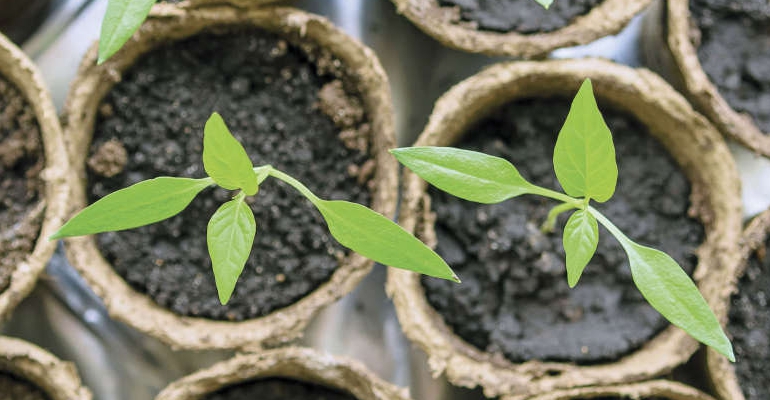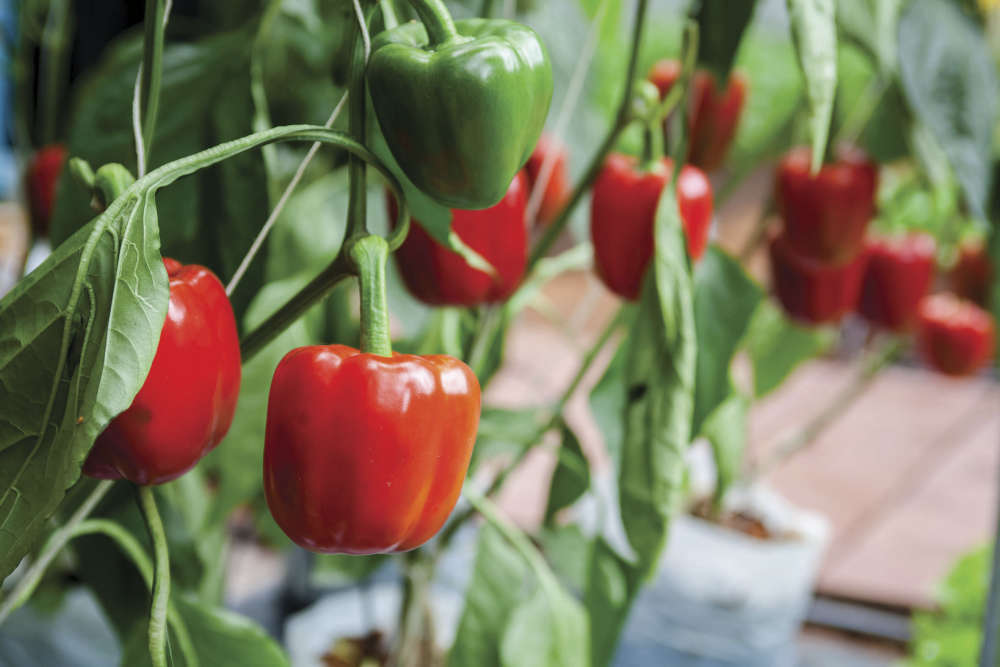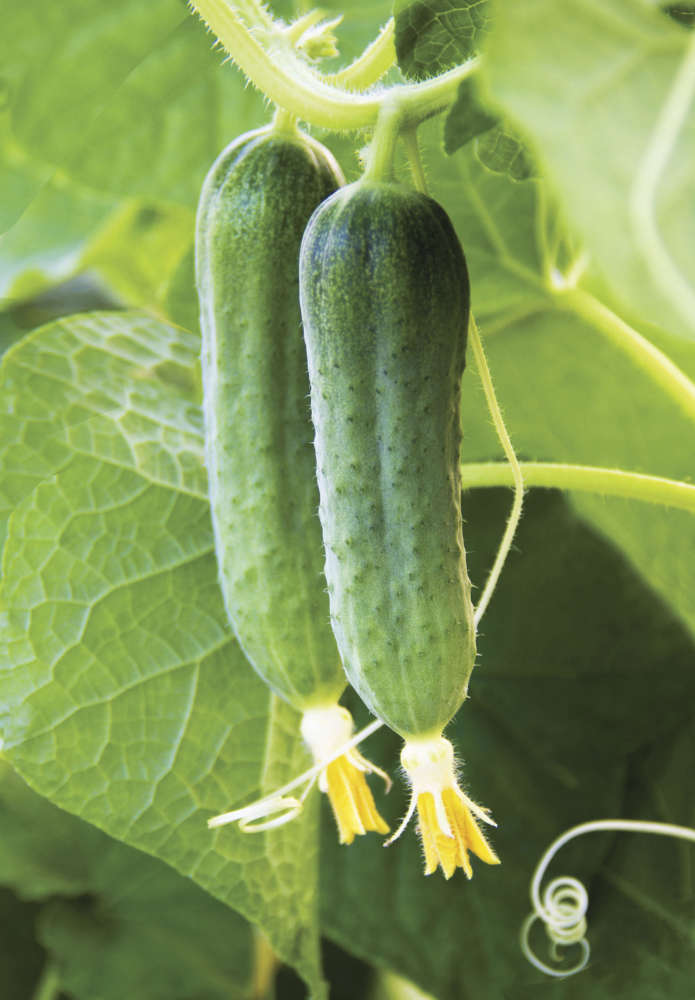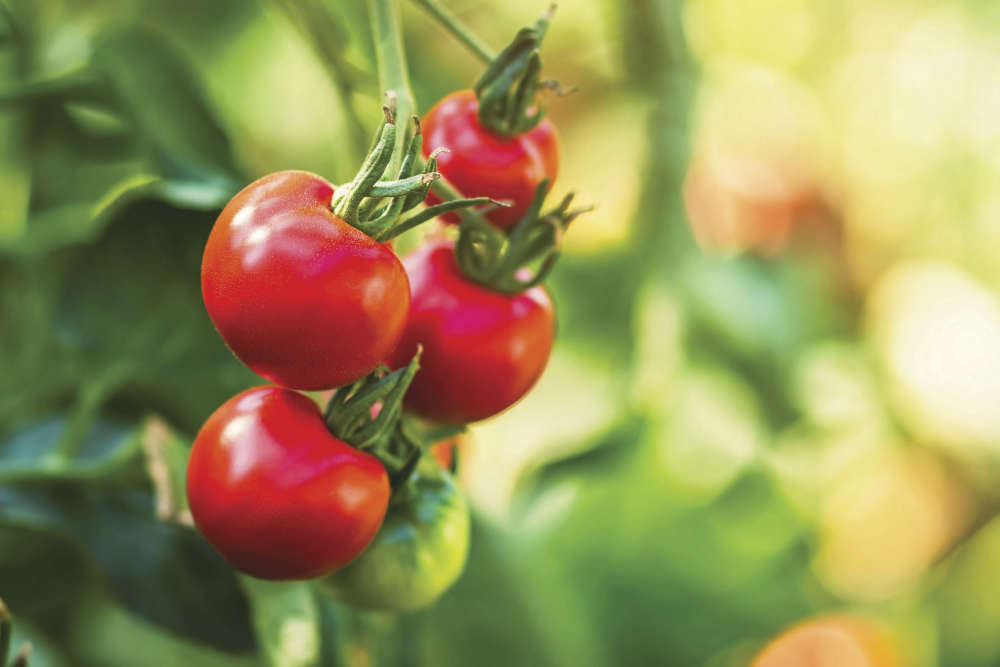
Got a greenhouse? Is there anything growing in it, or has it become a sad dumping ground for broken garden paraphernalia? Have a spring clear-out, says Flo Whitaker, take the junk to the recycling centre and make space for some nutritious summer veg!
Now is the ideal time to sow tender summer vegetables such as tomatoes, cucumbers, aubergines and peppers, (both sweet and chilli types). Frost-sensitive seedlings enjoy the protection of a warm conservatory, electric propagator or heated greenhouse. If you don’t have those, fear not – other methods are available. An airing cupboard may seem an unlikely bit of gardening kit, but the seeds will enjoy the warmth. They require no light during the first stages of germination and won’t mind the dark. Check them twice a day and remove to a bright indoor location as soon as shoots appear. A sunny windowsill makes a good propagation bench – but move pots into the centre of the room overnight. Windowsills are often chilly at night, as cool air is trapped between cold glass and drawn curtains – an unpleasant environment for tender plants.

Don’t sow the entire packet! Ask yourself, ‘How many plants do I actually need?’ If you keep some seeds in reserve, you can always try again if the first sowing fails. Seed trays occupy lots of space on a greenhouse bench and are too wide for most windowsills. Instead, fill a 10cm pot with seed compost, press the surface down lightly and space a dozen seeds on the surface. Scatter a very fine layer of compost or vermiculite on top and stand the pot in a saucer of water for 10 minutes. Allow excess water to drain away and loosely place clear plastic over the top of the pot, removing when seedlings start to show. Germination times can be erratic in spring; 7-14 days is typical. Rotating the pots 90° every day ensures seedlings grow upright, not ‘phototropic’, (leaning towards the light).

When 4cms high, transplant seedlings into individual small pots using multipurpose compost. They’ll need another final potting-on; 20cms pots are ideal for peppers and aubergines; tomatoes and cucumbers need 30cms or larger. Stake plants early using canes and string – remember, developing fruits are heavy. As plants begin to flower, apply a tomato fertiliser at the recommended rate.
If you don’t have a greenhouse or conservatory, all is not lost as some cool-resistant summer veg varieties are now available. They’ve been bred to cope with the contrariness of British weather and will crop in a sheltered outdoor spot. Aubergines are the exception to this hardy band – they’ll sulk unless you can offer them continuous warmth under glass. Aubergine seedlings can also be slow to reach maturity. Sowing in February/early March extends the growing season, but only do this if you can provide a sustained (day and night) temperature of around 18°C. Alternatively, wait until plantlets appear in the garden centres – let someone else have the hassle of raising them!


 Blooming Times: Happy Faces
Blooming Times: Happy Faces
 Blooming Times: Winter Sparklers
Blooming Times: Winter Sparklers
 Homes Extra: Restore, Repair, Recycle
Homes Extra: Restore, Repair, Recycle
 Home Style: A Scandi Winter's Tale
Home Style: A Scandi Winter's Tale
 Blooming Times: Winter Wonders
Blooming Times: Winter Wonders
 Home Style: Bold, Brave & Beautiful
Home Style: Bold, Brave & Beautiful
 Blooming Times: The Answer Lies in the Soil
Blooming Times: The Answer Lies in the Soil
 Blooming Times: Heavenly Hyacinths
Blooming Times: Heavenly Hyacinths
 Legendary Builds with Phoenix Construction Services
Legendary Builds with Phoenix Construction Services
 Blooming Times: Know Your Enemy
Blooming Times: Know Your Enemy
 Bespoke Dreams from Eridge Green Kitchens
Bespoke Dreams from Eridge Green Kitchens
 10 Hot Years: iFit Fires & Flues
10 Hot Years: iFit Fires & Flues
 Home Style: Bold Type
Home Style: Bold Type
 Blooming Times: The Sky's the Limit
Blooming Times: The Sky's the Limit
 Home Style: A Better Way of Life
Home Style: A Better Way of Life
 Homes Extra: Shed Space
Homes Extra: Shed Space
 Blooming Times: Top of the Pots
Blooming Times: Top of the Pots
 Kids Zone: Get the Kids Growing
Kids Zone: Get the Kids Growing
 Home Style: Pastures New
Home Style: Pastures New
 Homes Extra: Let There Be Light
Homes Extra: Let There Be Light